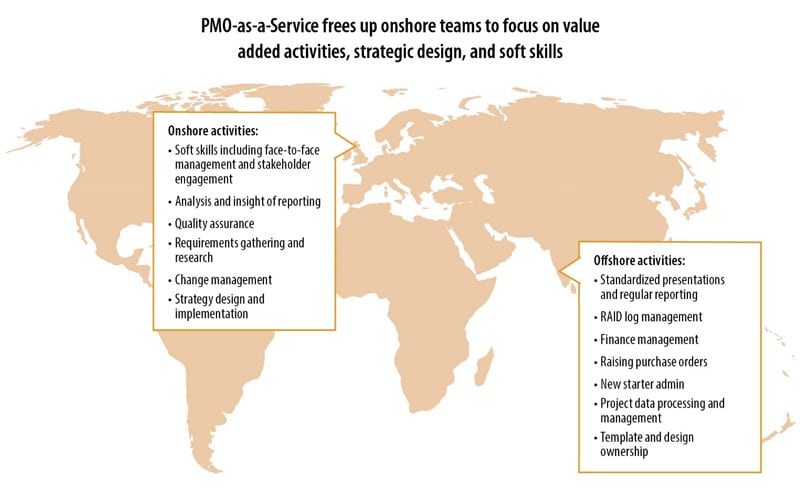Introduction
For decades, companies worldwide have used contractors to save money. In fact, contractors are expected to make up half of the American workforce within the next ten years.1 In the UK, there are approximately 1.77 million full-time contractors.2 In Europe, the Netherlands, Poland, Portugal, and Spain already have between 21% and 27% of the population working on temporary contracts.3
Contractors bring many benefits. They cost less because companies don’t have to pay contract workers pensions or benefits. They can also work flexibly and do not require long notice periods for on- or off-boarding from a project. They’re particularly useful for businesses facing a stagnant market and feeling the strain of dwindling profit margins.
The energy market is one such example – particularly in developed economies. Power consumption in the UK is falling steadily, down almost 10% in the past decade.4 In addition, the six large and established energy suppliers have faced competition from more than 60 smaller suppliers, many offering cheaper prices. And in 2018, the regulator Ofgem (the Office of Gas and Electricity Markets) enforced price caps in response to pressure from Parliament regarding overcharging. All of these factors have created a competitive energy market in the UK where energy suppliers are focusing on costs more than ever.
The problem with PMO
EDF is one of what are known as “the Big Six” energy suppliers in the UK, which hold a combined 75% electricity supply and 73% gas supply market share in Great Britain.5 EDF has 4.9 million customers in the UK and more than 13,500 employees.6
The firm embraces outsourcing, having outsourced much of its IT operations. As such, it was also reliant on a contractor base that supported its project managers in Corporate IT. Annie Smith became EDF’s Head of Corporate IT in 2017. She came to the position with over 20 years of experience in project and program management – but it was her first time working with an outsourced model. This meant she brought a fresh mindset to managing central IT, and EDF’s Chief Information Officer (CIO), Kelvin Wing, gave Smith free rein to take a step back and assess what was and wasn’t working within the projects arena.
One of the biggest challenges Smith saw was that EDF did not have a standard approach to Project Management Office (PMO) services. Typically, project managers in the company used contractors to provide PMO from various suppliers or sources. This led not only to an inconsistency in quality, but to inefficiencies in managing and monitoring all these contractors.
Smith says one of her first challenges was to ask herself: “How can I, as a leader, manage the quality of my delivery, regardless of where my project managers come from?”
Smith found herself looking for a way to reset things during her first year as the Head of Corporate IT at EDF. She started having an “art of the possible” conversation with Infosys, one of EDF’s existing partners, and that led to a trip to India. Smith says, “I had a real opportunity to feel what Infosys is like as a company. I think until you actually go and meet the offshore team, it’s hard to really understand the depth of commitment and the skill and the energy that you’re harnessing. I also went to Mysore, to the university, and was really taken aback by the level of investment Infosys is making in its people. I found that really inspiring.” Smith says she took some of that inspiration and used it to work on building one team.
A solution: PMO-as-a-Service
The solution that emerged from these discussions is what EDF and Infosys now describe as PMO-as-a-service (PMOaaS). The PMOaaS team’s purpose is to provide standardized and templated services that are common across all EDF’s central IT projects. The team is primarily based out of India and there’s an onsite lead based at EDF in the UK. The team manages finance, performance, resource, risk, and issues. They put together the trackers, reports, purchase orders, logs, performance reports, and board packs for all those areas. The team stores and maintains all the project products on a shared document platform. Employees in India work on London time and communicate with the EDF team mostly through emails and Skype calls.
PMOaaS allowed EDF to hire 80% fewer contractors, saved project managers time and let team members focus on value-added tasks
PMO-as-a-service (PMOaaS) is less expensive because there is a core team sharing the workload, rather than hiring one person for each project. This allows companies like EDF to reduce the number of contractors hired by 80%, free up project manager time, and allow project team members to focus on stakeholder management activities and more value-added tasks. PMOaaS is a more effective way of overseeing a portfolio of projects. Rather than having consultants doing the same thing in different ways, PMOaaS provides consistency, efficiency, and added value. It gives the client the consistent information they need to make important decisions.
“It’s a very simple concept but actually could be very powerful because it was normalizing and simplifying the way you did things. I definitely saw how standardization could work for me in a multi-partner model. And I could see how, back to my first objective, that would really help build one team because in some ways, it’s a real leveler,” says Smith.
With a PMOaaS approach, Smith realized she could ask any partner providing project management services to work in a consistent and joined-up way. She says, “It’s actually helpful for our diverse partners as well because there’s no misunderstanding. There’s no developing it themselves. There’s no management follow-up and rework involved because we do things one way.”
Figure 1: PMO-as-a-Service frees up onshore teams to focus on value-added activities, strategic design, and soft skills

Source: Infosys
Winning hearts and minds
Once Smith decided she wanted to take PMOaaS forward, she needed to put a business case together.
- Increase capacity: She already knew PMOaaS would increase capacity for project managers. Thirty percent of project manager time was being used for project board pack production.
- Replace private contractors: Most projects had private contractors doing PMO work. Different project managers were using the PMO for lots of different things. Smith says, “To be honest, I did meet a bit of resistance. I’ve got some quite experienced project managers in my own team, and they did not like the idea of giving up their PMO resource, because he or she was often their right-hand man, who might do admin or other supportive work for them. There was some resistance, but you have to take a data-driven approach to it.”
The business case was straightforward, but Smith knew she had to win hearts and minds. Smith says, “What we knew was, it’s one thing to prove it financially, but you have to win hearts and minds as well. So, rather than the project managers feeling like they’re losing something, I was very keen that they felt they were gaining something.” Smith and the outsourcing team did that by taking over the pain points – in other words, by outsourcing the jobs that project managers really didn’t want to do. To start with, PMOaaS took on all the financial administration, which was time consuming and difficult for project managers.
Smith says, “Taking away financial administration has been a really clever thing to do because suddenly project managers realized that ‘this really is something I hate doing. Actually, I normally get it wrong and the team in Bangalore have not only taken it on, they’ve been able to improve it and automate it!’ So that’s already brilliant.”
Smith went to project managers to get ideas for other things that either they didn’t like to do or would free up time for more value-adding activities, that PMOaaS could take over. Project managers said they found it really difficult to bring in new staff and to do related admin, like ordering laptops. PMOaaS took it on, wrote guides, and created a process.
Project managers found it difficult to find the right template on SharePoint. So PMOaaS took away the huge myriad of templates, slimmed them down, and operationalized them. The team in Bangalore has made it much simpler, so project managers can easily find the product they need.
The results
Smith calls PMOaaS at EDF “a really great success story” that provided time, cost, and quality benefits across the portfolio.
- It replaced all PMO contractor resources with a managed service.
- Projects transitioned under PMOaaS four months ahead of schedule.
- Management activity was saved through automation.
- Standardized user guides/project packs/logs/templates were developed and operationalized.
- There was a 30% increase in capacity, leading to additional projects managed by internal project managers.
Smith says, “I think we’ve developed a sense of one team, providing the structure to let other partners join that team. Now I have a way of doing things that there’s no argument with. I have the dashboards and the quality stats, allowing me to run a portfolio of projects.”
Smith’s advice
Smith is a strong believer in taking the time to go and see an operation. She says, “My first advice is take the time to really understand your business challenges. Then go and see how other companies solve those challenges because I can absolutely tell you, you won’t be the only one experiencing it.” Smith recommends looking at the solutions other companies have come up with and adding your own flavor to it. She says, “Everybody in my shoes, running large portfolios of change will have the same problems. It’s always value, cost, quality, throughput – those are the things everybody’s asking about.”
Smith also recommends working with partners like Infosys to help you be innovative and different. She was open to ideas from Infosys and they were open to hers as well. Smith says, “Don’t be afraid to start small. Ten of those small innovations can be as good as one big thing. I think it’s about keeping your mind open.”
What next?
EDF’s CIO, Kelvin Wing, lists PMO-as-a-service as an example of great innovation. Smith says, “Doing something different has been really well received.” Her ambition is to demonstrate the value of the service to the three other project portfolios at EDF. Smith says, “I can see they’ve got the same problems as me. They’re using expensive contractors and their project managers are spending time doing slides. So I think there’s a real case for us to use this as a standard across all our change portfolios. For instance, the sort of financial administration they’re doing for projects, I think that’s a service that I could offer across all of central IT.”
Undoubtedly, there are companies around the world with the same problems Smith faced and solved with Infosys. Smith wants companies everywhere to feel confident in small innovations. She tells her own team to feel empowered and confident taking small ideas forward. She says, “I’d like to keep the spirit of small steps. I’d like my team to feel empowered and confident and inspired to take small ideas forward because that’s the way we move forward.”
References
- Google Follows A Growing Workplace Trend: Hiring More Contractors Than Employees, Johan Moreno, May 31, 2019, Forbes.
- Top Contracting Industry Facts & Figures 2018, 2019, IT Contractors UK.
- The Rise of Temporary Work in Europe, Bas ter Weel, October 22, 2018, De Economist.
- Why is the UK’s energy consumption dropping faster than the rest of the EU?, Pascale Hughes, September 2019, iNews.
- Big Six energy suppliers, December 30, 2019, Wikipedia.
- EDF Energy’s small business products and services, EDF Energy.





